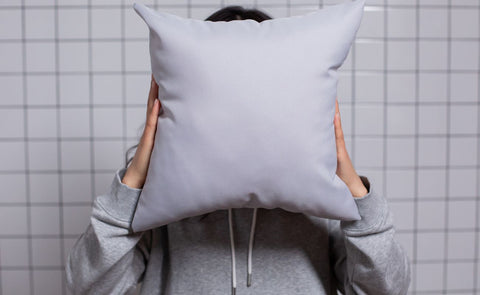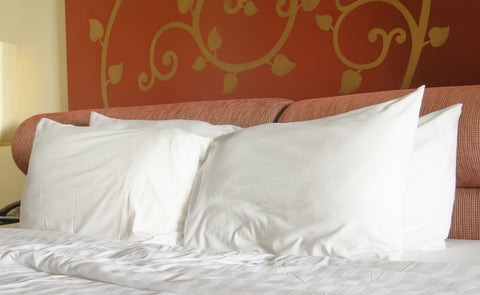You already know that snoring can wreck your sleep, strain relationships, and even hint at underlying health issues. What you may not realize is just how much the humble pillow beneath your head influences those rumbling nighttime sounds. By tuning the height, shape, and material of your pillow, you can open your airway, align your neck, and reduce the tissue vibration that produces snores. Below, you’ll find the latest research-backed guidance—delivered in plain language—so you can pick (or tweak) the pillow that helps you breathe easy tonight.
How Snoring Happens—and Why Your Pillow Matters
Snoring starts when air squeezes through a partially collapsed upper airway, causing soft tissue to vibrate. Gravity, muscle relaxation, nasal congestion, and poor neck alignment all make that collapse more likely. Your pillow directly affects three of those factors:
-
Neck Position. A pillow that’s too high kinks your neck forward, narrowing the pharyngeal space. One that’s too flat lets your jaw fall back, doing the same.
-
Head Elevation. Elevating the head by as little as 10 ° lessens throat tissue collapse by using gravity to pull the tongue forward.
-
Sleep Posture. The right pillow can coax you onto your side—crucial if you’re a “positional snorer,” meaning you snore mostly when lying on your back.
Science Snapshot: Position & Elevation Are Game-Changers
Elevation
A 2022 crossover study found that sleeping on a 10–30 ° incline cut snoring frequency by up to 31 % and improved subjective sleep quality. Wedge pillows deliver that gentle ramp without forcing you into an awkward position.
Memory-Foam Support
Researchers comparing a contoured memory-foam design with a standard fiberfill pillow reported a 17 dB drop in snore intensity and better oxygen saturation during polysomnography. Uniform contouring keeps your cervical spine neutral while resisting the mid-night “pancake” effect of down or feather fills.
Smart Posture Trainers
Emerging “smart” pillows use mild vibrations or air bladders to prompt you to roll onto your side when snoring begins. Early pilot data suggest measurable reductions in apneic events, but more large-scale trials are under way.
What Pillow Features Matter Most?
Loft & Alignment: Fill the Shoulder-to-Ear Gap
Think of the space between your outer shoulder and ear as your personal pillow blueprint. You want a loft that fills that gap without tilting the chin toward your chest. For most side-sleepers that means 4–6 inches; for back-sleepers, 3–4 inches. Test by lying down: if you can draw a straight line from ear canal through shoulder joint, you’re aligned.
Material Matters: Memory Foam, Latex, or Hybrid
-
Memory Foam: Adapts to cervical curves and maintains height overnight.
-
Latex: Bouncier and cooler, yet firm enough to keep your airway open.
-
Down Alternative/Fiberfill: Soft and adjustable, but prone to flattening—great as a topper over a firmer core.
Shape & Specialty Designs
|
Pillow Style |
How It Helps You |
Best For |
|
Contour Memory-Foam |
Central dip cradles the head; raised edges support the neck. |
Back or side snorers seeking neutral alignment. |
|
Wedge Pillow |
Elevates torso 6–8 in. to harness gravity and lessen airway collapse. |
Snorers with acid reflux or nasal congestion. |
|
Adjustable Loft (shredded foam) |
Remove or add fill until alignment feels perfect. |
Combination sleepers or those unsure of ideal height. |
|
Smart Anti-Snore Pillow |
Sensors detect snores and gently vibrate to cue position change without waking you. |
Positional snorers who mostly snore on their backs. |
Cooling Fabrics & Allergen Barriers
Overheating triggers restless tossing that can flip you onto your back. Look for bamboo-viscose, phase-change fabrics, or ventilated foam cores. Hypoallergenic covers keep dust-mite allergens (linked to nasal congestion) under control.
Evidence-Based Pillow Picks (No Brands, Just Types)
-
Medium-Loft Contour Memory-Foam Pillow – balances support and cervical curve.
-
6-Inch Wedge Pillow – ideal if you snore and wake with heartburn.
-
Adjustable Shredded-Foam Pillow – tweak loft nightly until snoring subsides.
-
Smart Vibration Pillow – combines side-sleep coaching with head elevation.
-
Latex Foam Pillow – stays lofty and cool, perfect if you run hot at night.
Power Pairings: Maximize Your Pillow’s Potential
-
Side Sleeping: Use a slim knee pillow to align hips and keep you from rolling onto your back.
-
Nasal Hygiene: Rinse nasal passages before bed; a clear nose equals less mouth-breathing.
-
Weight Management: Even a 5 % body-weight reduction can shrink neck circumference and lower snoring intensity.
-
Bedroom Humidity: Keep relative humidity between 40–50 % to prevent airway irritation and congestion.
-
Pillow Maintenance: Wash or replace covers weekly and the pillow every 18–24 months to avoid dust-mite buildup that can clog nasal passages and worsen snoring.
When Your Pillow Isn’t Enough: Red Flags
You should talk to a sleep physician if you notice any of these alongside snoring:
-
Daytime sleepiness or morning headaches
-
Witnessed pauses in breathing
-
High blood pressure or atrial fibrillation
-
Snoring that persists despite elevation and side-sleeping
Obstructive sleep apnea (OSA) is a medical condition; pillows help but can’t replace professional evaluation.
Sleep Soundly, Starting Tonight
Can the right pillow stop snoring? Yes—when it aligns your neck, elevates your airway, and supports side-sleeping, the science shows real reductions in snore frequency and volume. Combine an evidence-inspired pillow with smart sleep habits, and you’ll give yourself (and anyone within earshot) the best chance at silent, restorative rest. Make tonight the first of many quieter, healthier nights.



